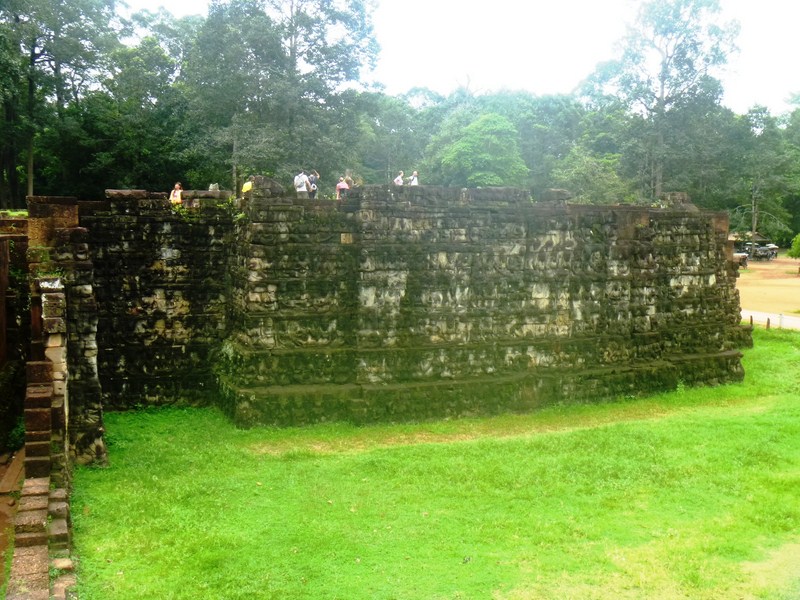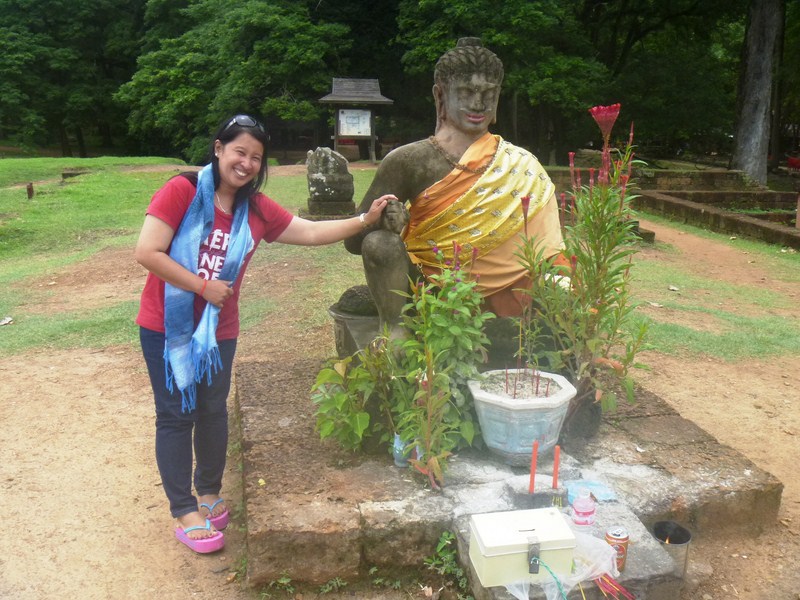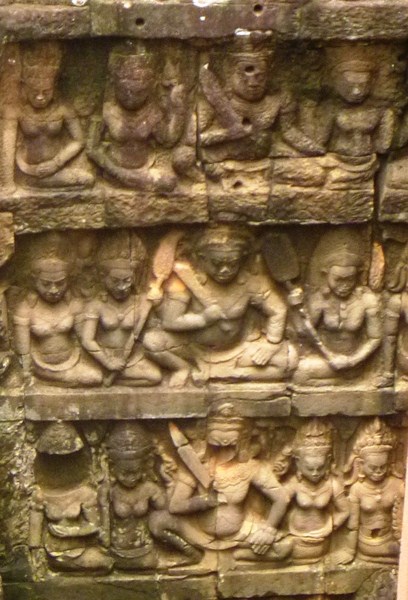Located in the northwest corner of the Royal Square of Angkor Thom and immediately north of the Terrace of the Elephants, we accessed this U-shaped structure from the main road. This is thought, by some, to have been used as a royal cremation site.
Check out “Terrace of the Elephants”
It was built at the end of the 12th century, in the Bayon style, by Jayavarman VI who reigned from 1181 to 1220. Its modern name is derived from a 15th-century sculpture, discovered at the site (now replaced by a replica) called the “Leper King.” The original statue now sits in the courtyard of the National Museum in Phnom Penh.
The statue, with thick lips, energetic chin, full cheeks, slightly open mouth, aquiline nose and clear brow, sits in the Javanese fashion (with his right knee raised) on a platform on the terrace. The position of its missing hand suggests it was holding something. Its nakedness and teeth being shown in a smile are absolutely and strangely unique in Khmer art.
Mystery and uncertainty surround the origin of its name. Some say it was so called because of its discoloration and the lichen and moss growing on it, reminiscent of a person with leprosy. It also said to depict Yama (the Hindu god of death or judgement), Kubera (the god of wealth, an alleged leper) and also fits in with the Cambodian legend of Yasovarman I (Dharmaraja), an Angkorian king who had leprosy.
The terrace is faced with dramatic bas-reliefs, both on the interior and exterior. During clearing, the EFEO (Ecole Française d’Extreme-Orient) found a second, 2 m. wide laterite wall, faced with sandstone, with bas-relief similar in composition to those of the outer wall. EFEO recently created a false corridor which allows visitors to inspect the bas relief on the first wall.





Pingback: Angkor Wat (Siem Reap, Cambodia) – B.L.A.S.T. – Live Life to the Fullest ……… Don't Stay Put